All Exams >
Grade 2 >
Science for Grade 2 >
All Questions
All questions of Life Cycle of Plants for Grade 2 Exam
The three plants given in the table are grouped together because all three:
Characteristics of three Plants

- a)Need some shade
- b)Loses their leaves
- c)Have Thorns
- d)Are shrubs
Correct answer is option 'B'. Can you explain this answer?
The three plants given in the table are grouped together because all three:
Characteristics of three Plants

Characteristics of three Plants

a)
Need some shade
b)
Loses their leaves
c)
Have Thorns
d)
Are shrubs
|
|
Amit Khanna answered |
All the three plants lose their leaves in autumn.
How do pet animals like dogs and cats benefit humans?- a)By providing companionship and emotional support
- b)By serving as sources of food and other products
- c)By helping with agricultural work and transportation
- d)By controlling pests and weeds in households
Correct answer is option 'A'. Can you explain this answer?
a)
By providing companionship and emotional support
b)
By serving as sources of food and other products
c)
By helping with agricultural work and transportation
d)
By controlling pests and weeds in households
|
|
Amrita Pillai answered |
Companionship and Emotional Support
Pet animals like dogs and cats play a vital role in providing companionship and emotional support to humans. Here are some key points to explain this benefit:
1. Companionship
- Pets are often referred to as "man's best friend." Their presence can reduce feelings of loneliness and isolation.
- They offer unconditional love and loyalty, creating a strong bond with their owners.
- Having a pet encourages social interaction, as pet owners often connect with other pet enthusiasts.
2. Emotional Support
- Pets can help reduce stress, anxiety, and depression. Their playful nature and affectionate behavior can uplift moods.
- The act of petting or cuddling a pet releases oxytocin, a hormone that promotes bonding and emotional well-being.
- Pets provide a sense of purpose and responsibility, especially for individuals who may feel lost or disconnected.
3. Physical Health Benefits
- The companionship of pets can lead to increased physical activity, as dogs, for example, require regular walks.
- Engaging with pets can lower blood pressure and improve heart health by reducing stress levels.
4. Teaching Empathy and Responsibility
- Caring for a pet teaches children empathy and responsibility. They learn to nurture and respect another being’s needs.
- This can lead to better social skills and emotional intelligence.
In summary, the companionship and emotional support provided by dogs and cats significantly enhance human well-being, making them invaluable members of many households.
Pet animals like dogs and cats play a vital role in providing companionship and emotional support to humans. Here are some key points to explain this benefit:
1. Companionship
- Pets are often referred to as "man's best friend." Their presence can reduce feelings of loneliness and isolation.
- They offer unconditional love and loyalty, creating a strong bond with their owners.
- Having a pet encourages social interaction, as pet owners often connect with other pet enthusiasts.
2. Emotional Support
- Pets can help reduce stress, anxiety, and depression. Their playful nature and affectionate behavior can uplift moods.
- The act of petting or cuddling a pet releases oxytocin, a hormone that promotes bonding and emotional well-being.
- Pets provide a sense of purpose and responsibility, especially for individuals who may feel lost or disconnected.
3. Physical Health Benefits
- The companionship of pets can lead to increased physical activity, as dogs, for example, require regular walks.
- Engaging with pets can lower blood pressure and improve heart health by reducing stress levels.
4. Teaching Empathy and Responsibility
- Caring for a pet teaches children empathy and responsibility. They learn to nurture and respect another being’s needs.
- This can lead to better social skills and emotional intelligence.
In summary, the companionship and emotional support provided by dogs and cats significantly enhance human well-being, making them invaluable members of many households.
Read the given features of a plant and identify it.
(i) It is a small plant with soft stem.
(ii) Its leaves are used to make medicine.
(iii) It is used to add flavor to food.- a)Tulsi
- b)Hibiscus
- c)Rose
- d)Both (a) and (c)
Correct answer is option 'A'. Can you explain this answer?
Read the given features of a plant and identify it.
(i) It is a small plant with soft stem.
(ii) Its leaves are used to make medicine.
(iii) It is used to add flavor to food.
(i) It is a small plant with soft stem.
(ii) Its leaves are used to make medicine.
(iii) It is used to add flavor to food.
a)
Tulsi
b)
Hibiscus
c)
Rose
d)
Both (a) and (c)
|
|
Amit Khanna answered |
Tulsi is a small seasonal herb with soft stem. Its leaves are used to make medicines, Its seeds and leaves are used to make food tasty.
Which of the following is a characteristic of trees?- a)They have soft stems.
- b)They usually live for a few months.
- c)They have a thick, hard stem called a trunk.
- d)They require support to grow.
Correct answer is option 'C'. Can you explain this answer?
a)
They have soft stems.
b)
They usually live for a few months.
c)
They have a thick, hard stem called a trunk.
d)
They require support to grow.
|
|
Stoneridge Institute answered |
Trees are characterized by their tall stature and have a thick, hard stem called a trunk, which provides support and structure to the plant.
Why is it important to protect wild animals and their habitats?- a)To cut down trees for human use.
- b)To exploit wild animals for commercial purposes.
- c)To preserve biodiversity and maintain ecological balance.
- d)To domesticate wild animals as pets.
Correct answer is option 'C'. Can you explain this answer?
a)
To cut down trees for human use.
b)
To exploit wild animals for commercial purposes.
c)
To preserve biodiversity and maintain ecological balance.
d)
To domesticate wild animals as pets.
|
|
Stoneridge Institute answered |
Protecting wild animals and their habitats is essential to preserve biodiversity and maintain the ecological balance of ecosystems.
What is the primary diet of animals like lions, tigers, and leopards?- a)Plants
- b)Insects
- c)Other animals
- d)Fish
Correct answer is option 'C'. Can you explain this answer?
a)
Plants
b)
Insects
c)
Other animals
d)
Fish
|
|
Janani Desai answered |
Introduction
Lions, tigers, and leopards are carnivorous animals, meaning their primary diet consists of other animals. This dietary choice is fundamental to their survival and ecological role.
Dietary Habits
- Carnivorous Nature: These big cats are classified as carnivores, which means they primarily hunt and consume meat.
- Hunting Skills: They have evolved to be skilled hunters, utilizing strength, stealth, and speed to catch their prey.
Types of Prey
- Large Herbivores: Lions often hunt large animals such as zebras, wildebeests, and buffaloes. They hunt in groups (prides), which increases their success rate.
- Smaller Mammals: Tigers and leopards tend to hunt smaller mammals like deer, antelope, and sometimes even birds or small reptiles, depending on their habitat.
Ecological Role
- Predator-Prey Balance: As apex predators, they help maintain the balance in ecosystems by controlling the population of herbivores, which in turn affects vegetation growth and overall habitat health.
- Nutrient Cycling: The remains of their prey contribute to nutrient cycling within the ecosystem, enriching the soil and supporting other life forms.
Conclusion
The primary diet of lions, tigers, and leopards consists of other animals. This carnivorous diet is not only essential for their survival but also plays a critical role in maintaining the ecological balance in their habitats.
Lions, tigers, and leopards are carnivorous animals, meaning their primary diet consists of other animals. This dietary choice is fundamental to their survival and ecological role.
Dietary Habits
- Carnivorous Nature: These big cats are classified as carnivores, which means they primarily hunt and consume meat.
- Hunting Skills: They have evolved to be skilled hunters, utilizing strength, stealth, and speed to catch their prey.
Types of Prey
- Large Herbivores: Lions often hunt large animals such as zebras, wildebeests, and buffaloes. They hunt in groups (prides), which increases their success rate.
- Smaller Mammals: Tigers and leopards tend to hunt smaller mammals like deer, antelope, and sometimes even birds or small reptiles, depending on their habitat.
Ecological Role
- Predator-Prey Balance: As apex predators, they help maintain the balance in ecosystems by controlling the population of herbivores, which in turn affects vegetation growth and overall habitat health.
- Nutrient Cycling: The remains of their prey contribute to nutrient cycling within the ecosystem, enriching the soil and supporting other life forms.
Conclusion
The primary diet of lions, tigers, and leopards consists of other animals. This carnivorous diet is not only essential for their survival but also plays a critical role in maintaining the ecological balance in their habitats.
Which animals are commonly used for transportation and carrying heavy loads?- a)Dogs and cats
- b)Horses and camels
- c)Elephants and monkeys
- d)Lions and tigers
Correct answer is option 'B'. Can you explain this answer?
a)
Dogs and cats
b)
Horses and camels
c)
Elephants and monkeys
d)
Lions and tigers
|
|
Nisha Kumar answered |
Transportation Animals
When it comes to animals used for transportation and carrying heavy loads, certain species stand out due to their strength, endurance, and ability to adapt to various environments.
Horses
- Horses have been used for centuries in various cultures around the world.
- They are strong and can carry heavy loads over long distances.
- Horses are also fast and can travel quickly, making them ideal for both transportation and work.
Camels
- Camels are often referred to as "ships of the desert" because they can travel long distances in arid climates.
- They are specifically adapted to handle extreme temperatures and can go for days without water.
- Camels can carry substantial weights, making them vital for trade routes, especially in desert regions.
Why Not Other Options?
- Dogs and Cats: While dogs can carry small loads and assist in transportation (like sled dogs), they are not commonly used for heavy lifting. Cats, on the other hand, are primarily pets and do not serve transportation purposes.
- Elephants: Although elephants are indeed strong and have been used for heavy lifting in some cultures, they are not as widely used for transportation as horses and camels.
- Monkeys, Lions, and Tigers: These animals are primarily wild and not domesticated for transportation. They do not have the physical capabilities or temperament suitable for carrying heavy loads.
In summary, horses and camels are the primary animals used for transportation and carrying heavy loads due to their strength, adaptability, and historical significance in human societies.
When it comes to animals used for transportation and carrying heavy loads, certain species stand out due to their strength, endurance, and ability to adapt to various environments.
Horses
- Horses have been used for centuries in various cultures around the world.
- They are strong and can carry heavy loads over long distances.
- Horses are also fast and can travel quickly, making them ideal for both transportation and work.
Camels
- Camels are often referred to as "ships of the desert" because they can travel long distances in arid climates.
- They are specifically adapted to handle extreme temperatures and can go for days without water.
- Camels can carry substantial weights, making them vital for trade routes, especially in desert regions.
Why Not Other Options?
- Dogs and Cats: While dogs can carry small loads and assist in transportation (like sled dogs), they are not commonly used for heavy lifting. Cats, on the other hand, are primarily pets and do not serve transportation purposes.
- Elephants: Although elephants are indeed strong and have been used for heavy lifting in some cultures, they are not as widely used for transportation as horses and camels.
- Monkeys, Lions, and Tigers: These animals are primarily wild and not domesticated for transportation. They do not have the physical capabilities or temperament suitable for carrying heavy loads.
In summary, horses and camels are the primary animals used for transportation and carrying heavy loads due to their strength, adaptability, and historical significance in human societies.
What should be provided to pet animals for their well-being?- a)Proper nutrition, shelter, and veterinary care
- b)Regular exercise and training
- c)A spacious living environment
- d)Interaction with other animals
Correct answer is option 'A'. Can you explain this answer?
a)
Proper nutrition, shelter, and veterinary care
b)
Regular exercise and training
c)
A spacious living environment
d)
Interaction with other animals
|
|
Stoneridge Institute answered |
Pet animals should be provided with proper nutrition, shelter, and veterinary care to ensure their well-being and health
What is the purpose of classifying plants based on their growth habits?- a)To identify which plants produce flowers.
- b)To understand the different environments where plants grow.
- c)To determine the lifespan and physical characteristics of plants.
- d)To learn about the nutritional value of different types of plants.
Correct answer is option 'C'. Can you explain this answer?
a)
To identify which plants produce flowers.
b)
To understand the different environments where plants grow.
c)
To determine the lifespan and physical characteristics of plants.
d)
To learn about the nutritional value of different types of plants.
|
|
Stoneridge Institute answered |
Classifying plants based on their growth habits helps us understand their lifespan, physical characteristics such as height and stem thickness, and the type of growth they undergo.
Which of the following statements explain about climbers?- a)Climbers are plants with week stem.
- b)They climb up on support.
- c)They cannot stand on their own.
- d)All of these.
Correct answer is option 'D'. Can you explain this answer?
Which of the following statements explain about climbers?
a)
Climbers are plants with week stem.
b)
They climb up on support.
c)
They cannot stand on their own.
d)
All of these.
|
|
Manish Kapoor answered |
All the above statements are correct about the climbers. As they are weak plants, need support and cannot stand of their own.
Where do we commonly find wild animals like crocodiles and frogs?- a)In deserts
- b)In forests
- c)In oceans
- d)In mountains
Correct answer is option 'B'. Can you explain this answer?
a)
In deserts
b)
In forests
c)
In oceans
d)
In mountains
|
|
Shounak Ghosh answered |
Wild Animals like Crocodiles and Frogs in Forests
Crocodiles and frogs are commonly found in forests due to various reasons:
In conclusion, forests provide the necessary resources and environment for wild animals like crocodiles and frogs to thrive, making them commonly found in these habitats.
Crocodiles and frogs are commonly found in forests due to various reasons:
- Habitat: Forests provide a suitable habitat for crocodiles and frogs as they offer a combination of water bodies like rivers, lakes, and swamps where these animals can thrive.
- Food Availability: Forests are rich in biodiversity, providing a wide range of prey for crocodiles and frogs to feed on, such as fish, insects, and small mammals.
- Protection: Forests offer ample hiding spots and cover for these animals to protect themselves from predators and harsh weather conditions.
- Water Sources: Crocodiles and frogs require access to water for breeding, feeding, and hydration, which makes forests with water bodies an ideal habitat for them.
- Biodiversity: Forests support a diverse ecosystem, allowing crocodiles and frogs to coexist with other species and maintain a balanced food chain.
In conclusion, forests provide the necessary resources and environment for wild animals like crocodiles and frogs to thrive, making them commonly found in these habitats.
How do domestic animals contribute to agricultural practices?- a)By serving as sources of meat and dairy products
- b)By pollinating flowers and plants
- c)By controlling pests and weeds
- d)By providing transportation for farmers
Correct answer is option 'A'. Can you explain this answer?
a)
By serving as sources of meat and dairy products
b)
By pollinating flowers and plants
c)
By controlling pests and weeds
d)
By providing transportation for farmers
|
|
Stoneridge Institute answered |
Domestic animals are utilized in agriculture for their meat, dairy, and other products, which contribute to human food sources and livelihoods.
How do shrubs differ from trees in terms of height and stem thickness?- a)Shrubs are taller with thicker stems.
- b)Shrubs are shorter with thinner stems.
- c)Shrubs have similar height but thicker stems.
- d)Shrubs have similar height but thinner stems.
Correct answer is option 'B'. Can you explain this answer?
a)
Shrubs are taller with thicker stems.
b)
Shrubs are shorter with thinner stems.
c)
Shrubs have similar height but thicker stems.
d)
Shrubs have similar height but thinner stems.
|
|
Stoneridge Institute answered |
Shrubs are typically shorter than trees and have thinner stems, contributing to their bushy appearance.
Turnip is a ____.
- a)fruit that we eat.
- b)root that we eat.
- c)seed that we eat.
- d)leaf that we eat.
Correct answer is option 'B'. Can you explain this answer?
Turnip is a ____.
a)
fruit that we eat.
b)
root that we eat.
c)
seed that we eat.
d)
leaf that we eat.
|
|
Aman Banerjee answered |
Introduction:
In this question, the correct answer is option 'B', which states that turnip is a leaf that we eat. Let's explore this answer in detail.
Explanation:
1. What is a turnip?
A turnip is a root vegetable that belongs to the Brassicaceae family. It is scientifically known as Brassica rapa subsp. rapa. Turnips are widely cultivated for their edible roots, which are typically round and bulbous in shape.
2. Turnip as a leaf:
While turnips are primarily known for their root, their leaves are also edible and commonly consumed. The young, tender leaves of turnip plants are often harvested and used as leafy greens. These leaves are rich in nutrients and have a slightly bitter taste.
3. Nutritional value of turnip leaves:
Turnip leaves are highly nutritious and provide several health benefits. They are a good source of vitamins A, C, and K, as well as minerals like calcium, iron, and potassium. These leaves are also low in calories and high in dietary fiber.
4. Culinary uses of turnip leaves:
Turnip leaves can be cooked and consumed in various ways. They can be sautéed, stir-fried, steamed, or added to soups and stews. The leaves have a slightly peppery flavor, which adds a unique taste to dishes. Additionally, they can be used as a substitute for other leafy greens like spinach or kale in recipes.
5. Health benefits of turnip leaves:
Consuming turnip leaves offers several health benefits. The high vitamin content in these leaves helps boost the immune system, promote healthy vision, and strengthen bones. The presence of dietary fiber aids digestion and supports a healthy digestive system. Turnip leaves are also known for their antioxidant properties, which can help protect against chronic diseases.
Conclusion:
In conclusion, while turnips are primarily known for their edible roots, their leaves are also a valuable part of the plant. Turnip leaves are nutritious, versatile, and can be enjoyed in various culinary preparations. Therefore, option 'B' stating that turnip is a leaf that we eat is the correct answer.
In this question, the correct answer is option 'B', which states that turnip is a leaf that we eat. Let's explore this answer in detail.
Explanation:
1. What is a turnip?
A turnip is a root vegetable that belongs to the Brassicaceae family. It is scientifically known as Brassica rapa subsp. rapa. Turnips are widely cultivated for their edible roots, which are typically round and bulbous in shape.
2. Turnip as a leaf:
While turnips are primarily known for their root, their leaves are also edible and commonly consumed. The young, tender leaves of turnip plants are often harvested and used as leafy greens. These leaves are rich in nutrients and have a slightly bitter taste.
3. Nutritional value of turnip leaves:
Turnip leaves are highly nutritious and provide several health benefits. They are a good source of vitamins A, C, and K, as well as minerals like calcium, iron, and potassium. These leaves are also low in calories and high in dietary fiber.
4. Culinary uses of turnip leaves:
Turnip leaves can be cooked and consumed in various ways. They can be sautéed, stir-fried, steamed, or added to soups and stews. The leaves have a slightly peppery flavor, which adds a unique taste to dishes. Additionally, they can be used as a substitute for other leafy greens like spinach or kale in recipes.
5. Health benefits of turnip leaves:
Consuming turnip leaves offers several health benefits. The high vitamin content in these leaves helps boost the immune system, promote healthy vision, and strengthen bones. The presence of dietary fiber aids digestion and supports a healthy digestive system. Turnip leaves are also known for their antioxidant properties, which can help protect against chronic diseases.
Conclusion:
In conclusion, while turnips are primarily known for their edible roots, their leaves are also a valuable part of the plant. Turnip leaves are nutritious, versatile, and can be enjoyed in various culinary preparations. Therefore, option 'B' stating that turnip is a leaf that we eat is the correct answer.
Which type of plant typically lives only for a few months?- a)Trees
- b)Shrubs
- c)Herbs
- d)Climbers
Correct answer is option 'C'. Can you explain this answer?
a)
Trees
b)
Shrubs
c)
Herbs
d)
Climbers
|
|
Stoneridge Institute answered |
Herbs are small plants with soft stems that usually live for only a few months.
What is the living place of a lion known as?- a)Den
- b)Nest
- c)Cave
- d)Burrow
Correct answer is option 'A'. Can you explain this answer?
a)
Den
b)
Nest
c)
Cave
d)
Burrow
|
|
Gauri Pillai answered |
Understanding Lion Habitats
Lions are majestic creatures known for their social behavior and strong family bonds. Unlike many other big cats, lions live in groups called prides, which significantly influences their choice of habitat.
Where Lions Reside
- Den: This is the correct answer. Lions typically use dens for resting and raising their cubs. Dens are often found in thick vegetation or caves, providing safety from predators and harsh weather. Lionesses usually choose a secluded spot to give birth and care for their young until they are strong enough to join the pride.
- Nest: This term is more commonly associated with birds and some mammals that build nests for laying eggs or resting. Lions do not build nests; they prefer to find natural shelters.
- Cave: While lions may occasionally take shelter in caves, they do not exclusively reside there. Caves are not their primary habitat, but they can serve as temporary resting places.
- Burrow: This term refers to a hole or tunnel dug by certain animals, primarily rodents. Lions do not dig or use burrows for living; they prefer open areas with some cover.
Conclusion
In summary, the correct place where a lion typically resides is a "den." This choice provides safety for their young and a comfortable space for the pride. Understanding their habitat helps us appreciate the importance of conservation efforts to protect these magnificent animals and their environments.
Lions are majestic creatures known for their social behavior and strong family bonds. Unlike many other big cats, lions live in groups called prides, which significantly influences their choice of habitat.
Where Lions Reside
- Den: This is the correct answer. Lions typically use dens for resting and raising their cubs. Dens are often found in thick vegetation or caves, providing safety from predators and harsh weather. Lionesses usually choose a secluded spot to give birth and care for their young until they are strong enough to join the pride.
- Nest: This term is more commonly associated with birds and some mammals that build nests for laying eggs or resting. Lions do not build nests; they prefer to find natural shelters.
- Cave: While lions may occasionally take shelter in caves, they do not exclusively reside there. Caves are not their primary habitat, but they can serve as temporary resting places.
- Burrow: This term refers to a hole or tunnel dug by certain animals, primarily rodents. Lions do not dig or use burrows for living; they prefer open areas with some cover.
Conclusion
In summary, the correct place where a lion typically resides is a "den." This choice provides safety for their young and a comfortable space for the pride. Understanding their habitat helps us appreciate the importance of conservation efforts to protect these magnificent animals and their environments.
What is the role of hyenas, jackals, and vultures in the ecosystem?- a)They hunt other animals.
- b)They primarily eat plants.
- c)They eat the remains of dead animals, keeping the environment clean.
- d)They eat insects and small mammals.
Correct answer is option 'C'. Can you explain this answer?
a)
They hunt other animals.
b)
They primarily eat plants.
c)
They eat the remains of dead animals, keeping the environment clean.
d)
They eat insects and small mammals.
|
|
Arjun Sharma answered |
Role of Hyenas, Jackals, and Vultures in the Ecosystem
Hyenas, jackals, and vultures play a crucial role in maintaining the balance of the ecosystem by primarily feeding on the remains of dead animals. This scavenging behavior has several important implications for the environment and other organisms.
Hyenas:
- Hyenas are known to scavenge on carcasses left behind by other predators or animals that have died naturally.
- By consuming the remains of dead animals, hyenas help in recycling nutrients back into the ecosystem.
- They also help in preventing the spread of diseases by consuming carrion before it has a chance to decompose and release harmful pathogens.
Jackals:
- Jackals are opportunistic feeders that also scavenge on the remains of dead animals.
- They play a role in cleaning up the environment by removing carcasses that could otherwise attract disease-spreading pests.
- Jackals help in maintaining the health of the ecosystem by preventing the buildup of decaying organic matter.
Vultures:
- Vultures are specialized scavengers that have highly acidic stomachs capable of digesting pathogens present in carrion.
- They are often the first to locate and feed on carcasses, preventing the spread of disease in the environment.
- Vultures contribute to the efficient decomposition of dead animals, which helps in nutrient recycling and maintaining ecosystem health.
In conclusion, hyenas, jackals, and vultures play a critical role in the ecosystem by consuming the remains of dead animals. Their scavenging behavior helps in nutrient recycling, disease prevention, and overall environmental cleanliness.
Hyenas, jackals, and vultures play a crucial role in maintaining the balance of the ecosystem by primarily feeding on the remains of dead animals. This scavenging behavior has several important implications for the environment and other organisms.
Hyenas:
- Hyenas are known to scavenge on carcasses left behind by other predators or animals that have died naturally.
- By consuming the remains of dead animals, hyenas help in recycling nutrients back into the ecosystem.
- They also help in preventing the spread of diseases by consuming carrion before it has a chance to decompose and release harmful pathogens.
Jackals:
- Jackals are opportunistic feeders that also scavenge on the remains of dead animals.
- They play a role in cleaning up the environment by removing carcasses that could otherwise attract disease-spreading pests.
- Jackals help in maintaining the health of the ecosystem by preventing the buildup of decaying organic matter.
Vultures:
- Vultures are specialized scavengers that have highly acidic stomachs capable of digesting pathogens present in carrion.
- They are often the first to locate and feed on carcasses, preventing the spread of disease in the environment.
- Vultures contribute to the efficient decomposition of dead animals, which helps in nutrient recycling and maintaining ecosystem health.
In conclusion, hyenas, jackals, and vultures play a critical role in the ecosystem by consuming the remains of dead animals. Their scavenging behavior helps in nutrient recycling, disease prevention, and overall environmental cleanliness.
What is the living place of a bear known as?- a)Den
- b)Nest
- c)Cave
- d)Burrow
Correct answer is option 'C'. Can you explain this answer?
a)
Den
b)
Nest
c)
Cave
d)
Burrow
|
|
Stoneridge Institute answered |
Bears typically live in caves, which serve as their shelter and resting place.
What distinguishes herbs from trees and shrubs?- a)Herbs have a thick, hard stem.
- b)Herbs have small woody stems.
- c)Herbs have soft stems.
- d)Herbs require support to grow.
Correct answer is option 'C'. Can you explain this answer?
a)
Herbs have a thick, hard stem.
b)
Herbs have small woody stems.
c)
Herbs have soft stems.
d)
Herbs require support to grow.
|
|
Stoneridge Institute answered |
Herbs are characterized by their small size and soft stems, unlike trees and shrubs.
What is the significance of domestic animals in human society?- a)They serve as sources of food and other products.
- b)They help maintain biodiversity in ecosystems.
- c)They contribute to scientific research.
- d)They assist in wildlife conservation efforts.
Correct answer is option 'A'. Can you explain this answer?
a)
They serve as sources of food and other products.
b)
They help maintain biodiversity in ecosystems.
c)
They contribute to scientific research.
d)
They assist in wildlife conservation efforts.
|
|
Stoneridge Institute answered |
Domestic animals play a crucial role in human society by providing food, such as meat, milk, and eggs, as well as other products like wool and leather.
What distinguishes climbers from creepers?- a)Climbers have thick stems.
- b)Creepers crawl along the ground.
- c)Climbers have a bushy appearance.
- d)Creepers need support to grow.
Correct answer is option 'B'. Can you explain this answer?
a)
Climbers have thick stems.
b)
Creepers crawl along the ground.
c)
Climbers have a bushy appearance.
d)
Creepers need support to grow.
|
|
Stoneridge Institute answered |
Climbers have weak stems and need support to grow, while creepers crawl along the ground without any support.
What distinguishes shrubs from trees?- a)Shrubs have a thin, delicate stem.
- b)Shrubs usually live for many years.
- c)Trees give a bushy appearance.
- d)Shrubs have a smaller size compared to trees.
Correct answer is option 'D'. Can you explain this answer?
a)
Shrubs have a thin, delicate stem.
b)
Shrubs usually live for many years.
c)
Trees give a bushy appearance.
d)
Shrubs have a smaller size compared to trees.
|
|
Stoneridge Institute answered |
Shrubs are smaller than trees and have small woody stems, giving them a bushy appearance.
What is the primary food source for animals like elephants, rhinoceros, and deer?- a)Plants
- b)Insects
- c)Other animals
- d)Fish
Correct answer is option 'A'. Can you explain this answer?
a)
Plants
b)
Insects
c)
Other animals
d)
Fish
|
|
Stoneridge Institute answered |
Animals like elephants, rhinoceros, and deer primarily eat plants for their sustenance.
Which part of plant gives out sweet fragnance to attract butterflies?- a)Flowers
- b)Leaves
- c)Fruits
- d)All of the above
Correct answer is option 'A'. Can you explain this answer?
Which part of plant gives out sweet fragnance to attract butterflies?
a)
Flowers
b)
Leaves
c)
Fruits
d)
All of the above

|
Learning Enablers answered |
Flowers give out sweet smells to attract butterflies. The fragrance helps butterflies find the flowers, so they can drink nectar. The nectar is food for butterflies.
Study the given flow chart and select the correct option that fills the spaces d, e, f, and g:
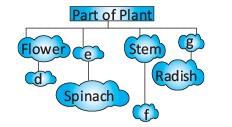
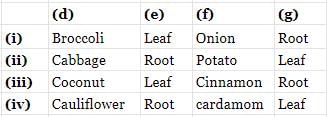
- a)(i)
- b)(ii)
- c)(iii)
- d)(iv)
Correct answer is option 'A'. Can you explain this answer?
Study the given flow chart and select the correct option that fills the spaces d, e, f, and g:




a)
(i)
b)
(ii)
c)
(iii)
d)
(iv)
|
|
Amit Khanna answered |
We eat different parts (stems, roots, leaves, and flowers) of different Plants. Flowers of broccoli, leaves of spinach, underground stems of onion and roots of radish are edible parts of these plants.
Which part of these plants given below are eaten as food?
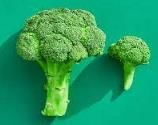
Broccoli
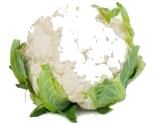
Cauliflower- a)Roots
- b)Leaves
- c)Flower
- d)Stem
Correct answer is option 'C'. Can you explain this answer?
Which part of these plants given below are eaten as food?

Broccoli

Cauliflower

Broccoli

Cauliflower
a)
Roots
b)
Leaves
c)
Flower
d)
Stem
|
|
Manish Kapoor answered |
Flowers of broccoli and cauliflower are eaten as food.
The given figure shows a plant with some labeled parts P, Q, R and S.
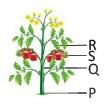
Part ____ carries food from ____ to all other parts of the plant.- a)P, S
- b)Q, R
- c)R, S
- d)S, Q
Correct answer is option 'B'. Can you explain this answer?
The given figure shows a plant with some labeled parts P, Q, R and S.

Part ____ carries food from ____ to all other parts of the plant.

Part ____ carries food from ____ to all other parts of the plant.
a)
P, S
b)
Q, R
c)
R, S
d)
S, Q
|
|
Amit Khanna answered |
Stems(Q) carry food from leaves (R) to all the other parts of the Plant.
What should be provided to pet animals for their mental and physical well-being?- a)Proper nutrition and shelter
- b)Regular exercise and social interaction
- c)A spacious living environment
- d)Veterinary care and vaccinations
Correct answer is option 'B'. Can you explain this answer?
a)
Proper nutrition and shelter
b)
Regular exercise and social interaction
c)
A spacious living environment
d)
Veterinary care and vaccinations
|
|
Stoneridge Institute answered |
Pet animals should be provided with regular exercise and social interaction to stimulate them mentally and physically, promoting their overall well-being.
Why is it important to protect wild animals from harm?- a)To exploit them for commercial purposes.
- b)To preserve biodiversity and maintain ecological balance.
- c)To domesticate them as pets.
- d)To use them for entertainment purposes.
Correct answer is option 'B'. Can you explain this answer?
a)
To exploit them for commercial purposes.
b)
To preserve biodiversity and maintain ecological balance.
c)
To domesticate them as pets.
d)
To use them for entertainment purposes.
|
|
Stoneridge Institute answered |
Protecting wild animals is crucial for preserving biodiversity and maintaining the ecological balance of natural ecosystems.
What type of plant needs support to grow vertically?- a)Trees
- b)Shrubs
- c)Herbs
- d)Climbers
Correct answer is option 'D'. Can you explain this answer?
a)
Trees
b)
Shrubs
c)
Herbs
d)
Climbers
|
|
Stoneridge Institute answered |
Climbers are plants with weak stems that require support, such as trellises or other plants, to grow vertically.
X in the given diagram could b :

- a)Potato
- b)Coconut
- c)Spinach
- d)Jute
Correct answer is option 'B'. Can you explain this answer?
X in the given diagram could b :


a)
Potato
b)
Coconut
c)
Spinach
d)
Jute
|
|
Arun Desai answered |
Coconut yields both oil and fibre.
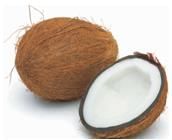

Monali made the following fruit groups on the basis of number of seeds they have but she made one mistake. Find the group with mistake.- a)

- b)

- c)

- d)

Correct answer is option 'B'. Can you explain this answer?
Monali made the following fruit groups on the basis of number of seeds they have but she made one mistake. Find the group with mistake.
a)

b)

c)

d)

|
|
Arun Desai answered |
Peach has only one seed while watermelon and papaya have many seeds.
What will happen to a plant if all its flowers are removed from it?- a)The plant will stop making food.
- b)The plant will stop transporting water to all other parts:
- c)The plant will not produce any seeds or fruits.
- d)The plant will eventually die.
Correct answer is option 'C'. Can you explain this answer?
What will happen to a plant if all its flowers are removed from it?
a)
The plant will stop making food.
b)
The plant will stop transporting water to all other parts:
c)
The plant will not produce any seeds or fruits.
d)
The plant will eventually die.
|
|
Amit Khanna answered |
If all the flowers of a plant is removed then the plant will not produce any seeds or fruits.
'X' is a stem that grows above the ground while 'Y' is a stem that grows under the ground. What are 'X' and 'Y'?
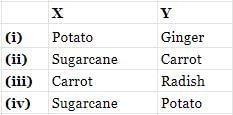
- a)(i)
- b)(ii)
- c)(iii)
- d)(iv)
Correct answer is option 'D'. Can you explain this answer?
'X' is a stem that grows above the ground while 'Y' is a stem that grows under the ground. What are 'X' and 'Y'?


a)
(i)
b)
(ii)
c)
(iii)
d)
(iv)
|
|
Amit Khanna answered |
Sugarcane is a stem that grows above the ground. Ginger and Potato are stems that grow under the ground. Carrot and radish are roots that grow underground.
What should be done to protect wild animals and their habitats?- a)Cut down trees for human use.
- b)Kill wild animals for their body parts.
- c)Preserve forests and avoid harming wild animals.
- d)Keep wild animals as pets at home.
Correct answer is option 'C'. Can you explain this answer?
a)
Cut down trees for human use.
b)
Kill wild animals for their body parts.
c)
Preserve forests and avoid harming wild animals.
d)
Keep wild animals as pets at home.
|
|
Stoneridge Institute answered |
To protect wild animals and their habitats, it is essential to preserve forests and refrain from harming or exploiting wild animals.
In the given diagram, X could be: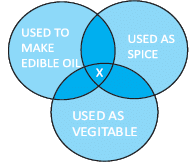
- a)Fennel
- b)Mustard
- c)Groundnut
- d)Coconut
Correct answer is option 'B'. Can you explain this answer?
In the given diagram, X could be:

a)
Fennel
b)
Mustard
c)
Groundnut
d)
Coconut
|
|
Arun Desai answered |
Mustard is a spice, vegetable and also yields oil.
A tree is protected by an outer covering called __________.- a)crown
- b)bark
- c)branch
- d)trunk
Correct answer is option 'B'. Can you explain this answer?
A tree is protected by an outer covering called __________.
a)
crown
b)
bark
c)
branch
d)
trunk

|
Kds Coaching answered |
The bark is the outer covering that protects the tree.
What do animals like elephants and monkeys do in the forest?- a)They build nests on trees.
- b)They rest under the shade of trees.
- c)They live in caves.
- d)They burrow underground.
Correct answer is option 'B'. Can you explain this answer?
a)
They build nests on trees.
b)
They rest under the shade of trees.
c)
They live in caves.
d)
They burrow underground.
|
|
Stoneridge Institute answered |
Animals like elephants and monkeys rest under the shade of trees in the forest.
Observe the given picture. What would be?
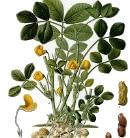 Source of Cooking oil
Source of Cooking oil- a)Sweet potato
- b)Sugarcane
- c)Groundnut
- d)Aloe vera
Correct answer is option 'C'. Can you explain this answer?
Observe the given picture. What would be?
 Source of Cooking oil
Source of Cooking oil
 Source of Cooking oil
Source of Cooking oila)
Sweet potato
b)
Sugarcane
c)
Groundnut
d)
Aloe vera
|
|
Manish Kapoor answered |
Groundnut is a source of cooking oil.
Which type of plant has a creeping growth habit?- a)Trees
- b)Shrubs
- c)Herbs
- d)Creepers
Correct answer is option 'D'. Can you explain this answer?
a)
Trees
b)
Shrubs
c)
Herbs
d)
Creepers
|
|
Stoneridge Institute answered |
Creepers are plants with weak stems that crawl along the ground, spreading horizontally instead of growing vertically.
What is the primary role of veterinary doctors?- a)To treat human diseases
- b)To treat injured or sick animals
- c)To perform surgeries on wild animals
- d)To conduct scientific research on animals
Correct answer is option 'B'. Can you explain this answer?
a)
To treat human diseases
b)
To treat injured or sick animals
c)
To perform surgeries on wild animals
d)
To conduct scientific research on animals
|
|
Stoneridge Institute answered |
Veterinary doctors specialize in treating injured or sick animals, providing medical care and support to ensure their well-being.
How do animals like elephants and monkeys contribute to the ecosystem?- a)They build nests on trees.
- b)They primarily eat plants, helping to disperse seeds.
- c)They hunt other animals.
- d)They eat the remains of dead animals.
Correct answer is option 'B'. Can you explain this answer?
a)
They build nests on trees.
b)
They primarily eat plants, helping to disperse seeds.
c)
They hunt other animals.
d)
They eat the remains of dead animals.
|
|
Stoneridge Institute answered |
Animals like elephants and monkeys contribute to the ecosystem by dispersing seeds through their consumption of plants and fruits.
Which of the following statements is INCORRECT about plants?- a)Grapevine is a creeper plant.
- b)Creepers are plants that growalong ground.
- c)Money plant is a climber plant.
- d)Climbers are plants that climbup a support.
Correct answer is option 'A'. Can you explain this answer?
Which of the following statements is INCORRECT about plants?
a)
Grapevine is a creeper plant.
b)
Creepers are plants that growalong ground.
c)
Money plant is a climber plant.
d)
Climbers are plants that climbup a support.
|
|
Swati Sharma answered |
Grapevine is a climber and not creeper.
In a plant, X absorbs water and minerals from the soil. X is edible in_________ .- a)Cabbage
- b)Cauliflower
- c)Onion
- d)Carrot
Correct answer is option 'D'. Can you explain this answer?
In a plant, X absorbs water and minerals from the soil. X is edible in_________ .
a)
Cabbage
b)
Cauliflower
c)
Onion
d)
Carrot
|
|
Swati Sharma answered |
Carrot is roots and thus absorbs water and minerals from the soil.
Select the plant which is of the same type as shown in the
- a)Coriander
- b)Mango
- c)Banana
- d)Mint
Correct answer is option 'B'. Can you explain this answer?
Select the plant which is of the same type as shown in the

a)
Coriander
b)
Mango
c)
Banana
d)
Mint
|
|
Arun Desai answered |
Mango and coconut are both tree types of plants.
At which of the following time may a plant be preparing food?- a)6 a.m.
- b)10 a.m.
- c)10 p.m.
- d)Midnight
Correct answer is option 'B'. Can you explain this answer?
At which of the following time may a plant be preparing food?
a)
6 a.m.
b)
10 a.m.
c)
10 p.m.
d)
Midnight

|
Kds Coaching answered |
A plant prepares food through photosynthesis, which requires sunlight. This happens during the day, so 10 a.m. is when a plant is actively preparing food.
Where do we find wild animals like lions and tigers?- a)In the zoo
- b)In domestic environments
- c)In forests
- d)In rivers
Correct answer is option 'C'. Can you explain this answer?
a)
In the zoo
b)
In domestic environments
c)
In forests
d)
In rivers
|
|
Stoneridge Institute answered |
Wild animals like lions and tigers are found in their natural habitats, primarily in forests.
What is the primary function of honey bees in ecosystems?- a)Producing honey for human consumption
- b)Pollinating flowers and plants
- c)Controlling insect populations
- d)Providing food for other animals
Correct answer is option 'B'. Can you explain this answer?
a)
Producing honey for human consumption
b)
Pollinating flowers and plants
c)
Controlling insect populations
d)
Providing food for other animals
|
|
Stoneridge Institute answered |
Honey bees play a crucial role in ecosystems by pollinating flowers and plants, facilitating the reproduction of flowering plants and the production of fruits and seeds.
Which of the following is correct regarding the plant whose fruit is shown in the given picture?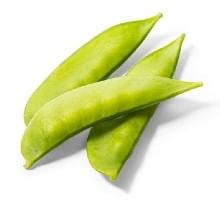
- a)The plant is bushy with thin woody stem.
- b)The plant is verybig with thick hard woody stem.
- c)The plant has weak stem and it grows along the ground.
- d)The plant has weak stem and needs support to climb up.
Correct answer is option 'D'. Can you explain this answer?
Which of the following is correct regarding the plant whose fruit is shown in the given picture?

a)
The plant is bushy with thin woody stem.
b)
The plant is verybig with thick hard woody stem.
c)
The plant has weak stem and it grows along the ground.
d)
The plant has weak stem and needs support to climb up.
|
|
Arun Desai answered |
Pea is a climber thus has weak stem and needs support to climb up.
Chapter doubts & questions for Life Cycle of Plants - Science for Grade 2 2025 is part of Grade 2 exam preparation. The chapters have been prepared according to the Grade 2 exam syllabus. The Chapter doubts & questions, notes, tests & MCQs are made for Grade 2 2025 Exam. Find important definitions, questions, notes, meanings, examples, exercises, MCQs and online tests here.
Chapter doubts & questions of Life Cycle of Plants - Science for Grade 2 in English & Hindi are available as part of Grade 2 exam.
Download more important topics, notes, lectures and mock test series for Grade 2 Exam by signing up for free.
Science for Grade 2
16 videos|81 docs|26 tests
|

Contact Support
Our team is online on weekdays between 10 AM - 7 PM
Typical reply within 3 hours
|
Free Exam Preparation
at your Fingertips!
Access Free Study Material - Test Series, Structured Courses, Free Videos & Study Notes and Prepare for Your Exam With Ease

 Join the 10M+ students on EduRev
Join the 10M+ students on EduRev
|

|
Create your account for free
OR
Forgot Password
OR
Signup on EduRev and stay on top of your study goals
10M+ students crushing their study goals daily









